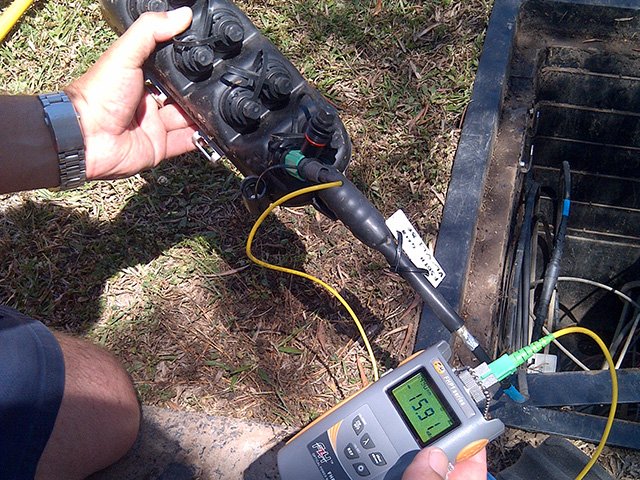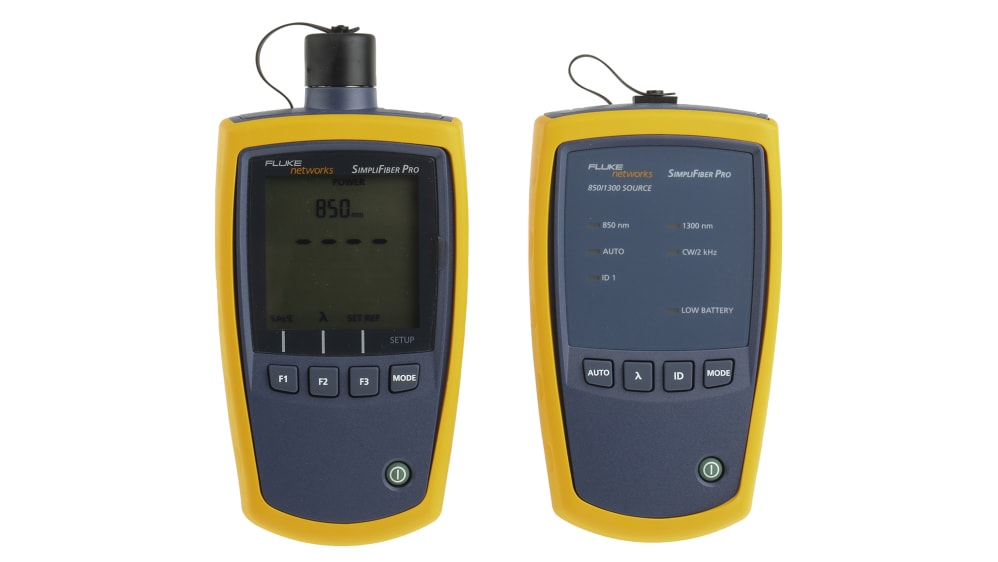A cutting-edge optical fibre diameter analyser supports fibre manufacturing.
A cutting-edge optical fibre diameter analyser supports fibre manufacturing.
Blog Article
Revealing the Key Uses of Optical Fibre Checking for Effective Information Transmission
In the world of modern-day communication, optical fibre screening arises as a crucial technique for maximizing data transmission. By utilizing techniques such as Optical Time Domain Name Reflectometry (OTDR) and insertion loss evaluations, network drivers can successfully identify and resolve issues that might compromise signal stability. As the need for faster and more trusted connections remains to increase, the effects of these screening strategies prolong beyond prompt mistake detection, affecting long-lasting network efficiency. Comprehending the multifaceted applications of optical fiber testing invites a deeper expedition right into its pivotal duty in forming the future of data interaction.

Importance of Optical Fibre Testing
The significance of optical fiber testing can not be overstated, as it acts as a vital component in ensuring the dependability and efficiency of data transmission systems. In a period where high-speed communication is critical, any deficiencies in fiber optics can cause significant data loss and reduced performance. For that reason, rigorous testing procedures are important to confirm the honesty and efficiency of optical cables.
Evaluating permits the recognition of issues such as micro-bends, macrobends, and splice losses that could hinder signal high quality. It supplies insights right into the total depletion and bandwidth capabilities of the fibre, guaranteeing that the network fulfills particular operational criteria. Normal testing not only improves system efficiency however also prolongs the lifespan of the framework by determining potential issues before they intensify into expensive failings.

Kinds Of Optical Fibre Examinations
Different types of optical fiber tests are performed to make sure the performance and dependability of fibre optic networks. These examinations can be classified into a number of essential types, each serving a details purpose in examining the integrity of the fiber.
First, Optical Time Domain Reflectometry (OTDR) is a noticeable test that determines faults, interlaces, and adapters within the fibre. By sending out pulses of light and examining the reflected signals, service technicians can identify problems along the fibre's size.
Second, insertion loss examinations assess the quantity of signal loss when light go through ports or splices, which is essential for maintaining network efficiency.
Third, return loss tests gauge the amount of light mirrored back in the direction of the resource, supplying insights right into the top quality of connections and prospective resources of disturbance.
Furthermore, continuity tests make sure that the fibre course is total, permitting technicians to confirm that the fibre is undamaged with no breaks. optical fibre testing equipment.
Last but not least, aesthetic fault locators make use of visible light to recognize breaks or serious bends in the fibre, aiding in fast troubleshooting. Jointly, these examinations develop a comprehensive method to keeping optimal performance in fibre optic networks.

Applications in Network Upkeep
In modern telecoms, efficient network maintenance depends greatly on optical fiber screening to identify and rectify concerns immediately. Normal testing makes sure that the network operates at ideal performance degrees, lowering downtime and improving individual experience.
One of the primary applications of optical fiber screening in read the full info here maintenance is the detection of faults, such as breaks, flexes, or inappropriate connections. Methods like Optical Time Domain Name Reflectometry (OTDR) permit my site technicians to situate these problems accurately and assess the high quality of the fiber link. Additionally, loss testing confirms the integrity of the optical path, making sure that signal attenuation continues to be within appropriate restrictions.
Regular maintenance screening likewise aids in safety nets, determining prospective issues before they intensify right into significant failures. This proactive technique can save organizations both time and funds. Moreover, throughout upgrades or developments, optical fibre screening makes sure that brand-new installments integrate perfectly with existing framework.
Enhancing Information Transmission Dependability
Effective network maintenance through optical fiber screening not just addresses prompt concerns however also plays a substantial role in enhancing data transmission integrity. By identifying mistakes, measuring signal loss, and examining the overall condition of fibre optic cables, screening ensures that possible problems are rectified before they escalate right into substantial disruptions.
Normal optical fibre screening, such as time-domain reflectometry (TDR) and optical time-domain reflectometry (OTDR), enables service technicians to determine the precise locations of breaks, flexes, or port concerns within the network. This positive approach not only decreases downtime but also enhances the performance of information transmission by ensuring that the paths for signals are clear and functioning successfully.
Moreover, screening help in validating adherence to sector criteria and requirements, which is vital for maintaining the stability of data circulation. By guaranteeing that each link fulfills required thresholds for loss and quality, companies can bolster their self-confidence in the dependability of their information networks.
Inevitably, buying extensive optical fibre screening not only enhances information transmission reliability but additionally sustains the lasting functional performance of communication infrastructures.
Future Fads in Fibre Testing
Emerging modern technologies are poised to change fibre testing, leading the way for improved efficiency and precision in data transmission diagnostics (robotic vision). As the need for faster web and greater transmission capacity remains to rise, the integration of advanced tools such as expert system (AI) and machine discovering (ML) is readied to change conventional fibre testing methods. These innovations will make it possible for predictive upkeep and automated fault discovery, dramatically minimizing downtime and enhancing network integrity
Furthermore, the fostering of Web of Things (IoT) tools will help with real-time monitoring of fiber networks, allowing for prompt recognition of performance issues. This shift in the direction of positive management will reduce disturbances and maximize information circulation.
In addition, advancements in optical time-domain Full Article reflectometry (OTDR) and brand-new screening criteria will enhance the accuracy of dimensions, guaranteeing that data honesty is preserved throughout the transmission process. The introduction of 5G modern technology additionally necessitates the advancement of a lot more sophisticated fiber screening techniques to sustain its high-speed demands.
Verdict
To conclude, optical fibre testing is vital for preserving efficient data transmission within communication networks. By using numerous screening methods, such as OTDR and insertion loss tests, potential mistakes can be determined and corrected, thereby improving signal clearness and lessening downtime. Normal screening not just makes certain compliance with industry standards but also helps with positive maintenance, ultimately adding to the long-term integrity and efficiency of fiber optic systems. The ongoing advancement of screening methodologies will additionally strengthen these abilities in the future.
Report this page